The proper Crooked Knife or, to give it it's Native American names, the Wagikoman, Mocotaugan, Mukutakan, Bikahtagenigan, Couteau Croche, appear to have originally been a Native American tool made using beaver teeth and, most probably other material such as stones. Later, when white people turned up uninvited, taking over the show and bringing many unwanted things, they also brought steel with them. Presumably because steel is stronger than beaver's teeth, (I assume, having never used a beaver's tooth, to make a knife, I wouldn't mind trying to make one, if someone out there has any beaver's teeth to spare!) the crooked knives acquired steel blades.
Depending on what you read, the word crooked refers to the shape of the handle rather than the blade, but other texts assert the name refers to the shape of the blade and not to the handle.
So to me, a Mocotoguan is a tool like this:
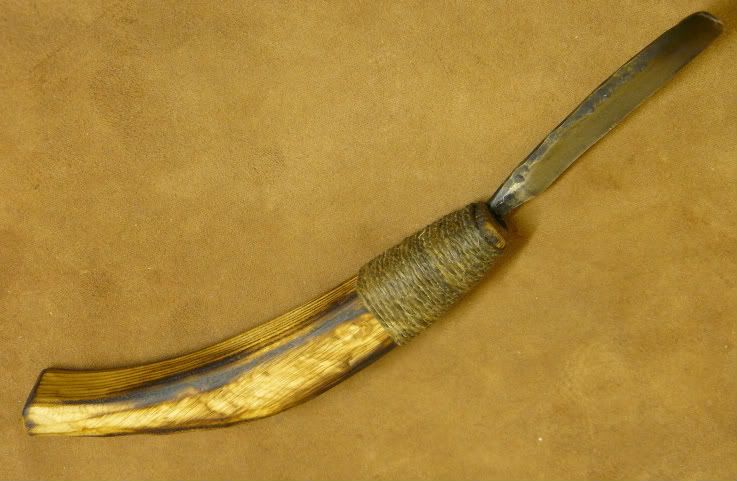 |
| Mocotoguan with forged blade |
And you hold it like this:
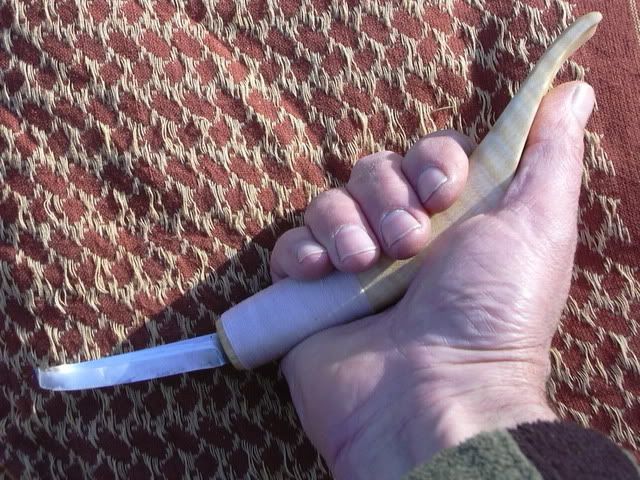 |
| Holding a right-handed crooked knife |
It is a very versatile tool, and was used primarily to work green woods, rather than dry woods.
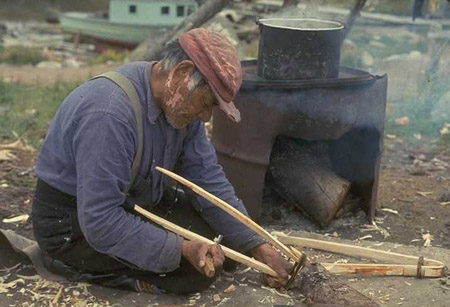 |
| Using the crooked knife |
The blades can be many shapes and sizes, from a straight blade, sticking straight out of the handle, to a curved blade with compound angles . From my own experience, the curve at the end of the blade is there more to prevent digging into the work with the tip rather than to be used for hollowing . It can be used for hollowing, but I don't think this was the entended purpose for the majority of the knives. Again from my own experience, I believe the blades need to be thick enough not to bend.
Other curved blade knives.
There are other curved knife blades available, and I have seen most of them called crooked knives, though they definitely are not.
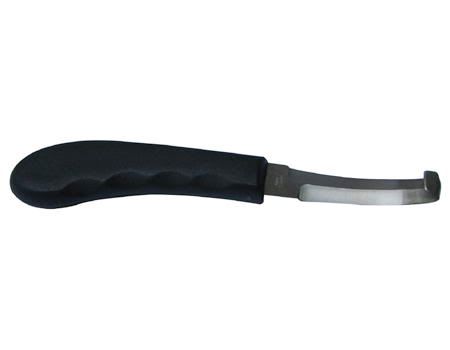 |
| Hoof knife, as used by farriers |
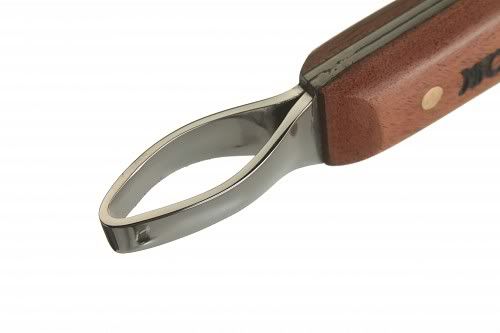 | ||
| Loop knife |
 | |||||||||||||||||||||||||||
| The good old Mora spoon knife |
Then, there are the carving blades made by Kestrel Tools. These are high quality, I would almost say dainty, carving tools blades. They are carving knives blades rather than crooked knives.
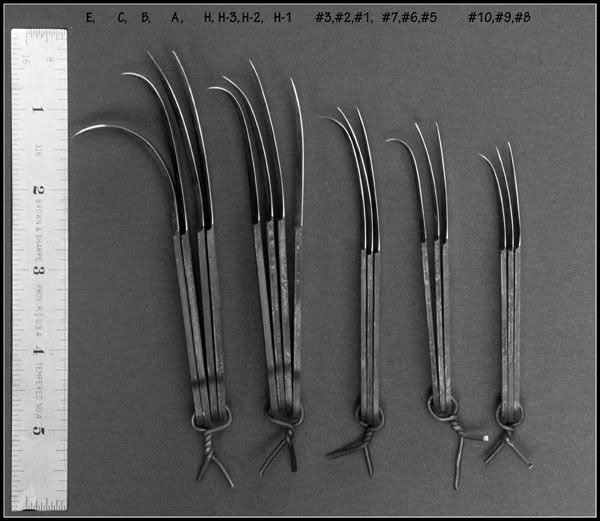 |
| Complete set of Kestrel's carving blades |
Of course, a crooked knife is a very versatile tool. It's not just wood you can use it on!
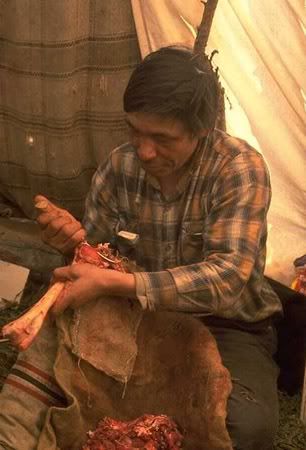 |
| Removing meat from a bone |
In my view then, it's horse for courses . Spoon knives for hollowing, curved carving blades for carving, hoof and loop knives for horses' feet.
So then, crooked knife for all purpose green wood work, or for dry softwood.
So, in my (not humble or apologetic at all!) opinion the Crooked knife is, and deserves to be the true, versatile, Bushcraft knife.
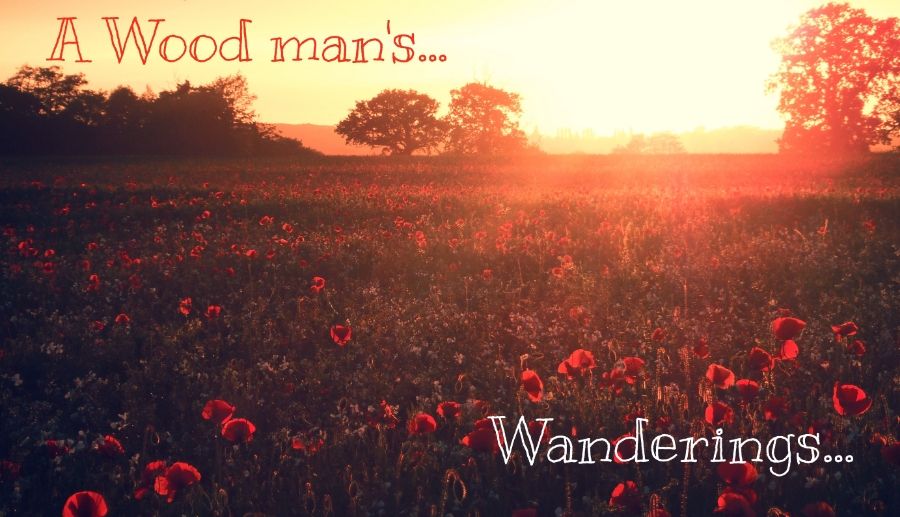
Whoa, what a cool post! I have to dive into that matter and learn a thing or too. Thanks so much for sharing!
ReplyDeleteGood post Joel.
ReplyDeleteIm going to have to make me a crooked knife in the traditional style me thinks.
This comment has been removed by a blog administrator.
ReplyDeleteOOps, pressed the wrong button.....
ReplyDelete